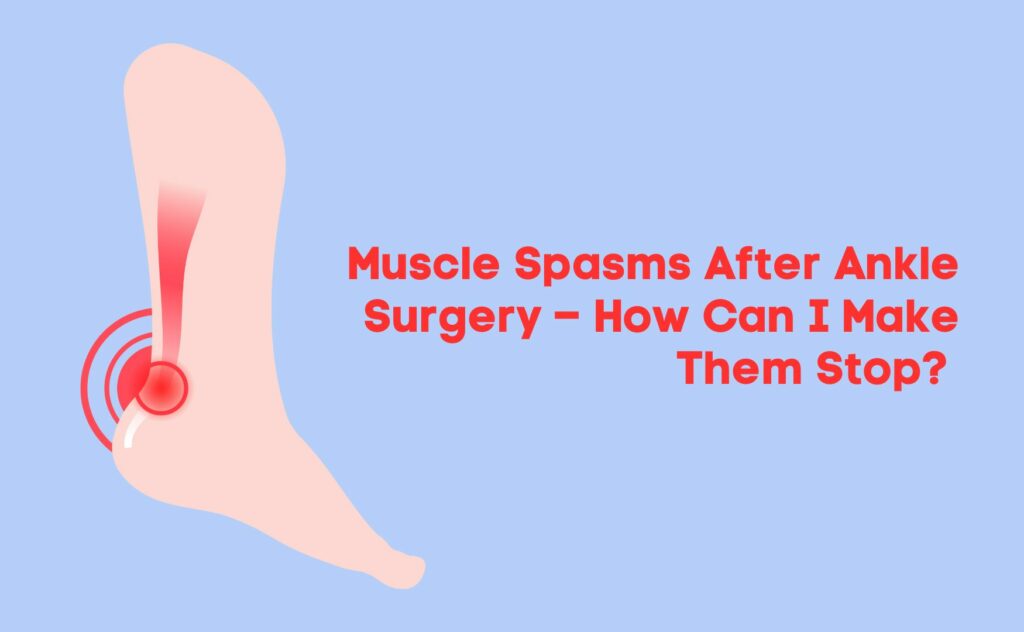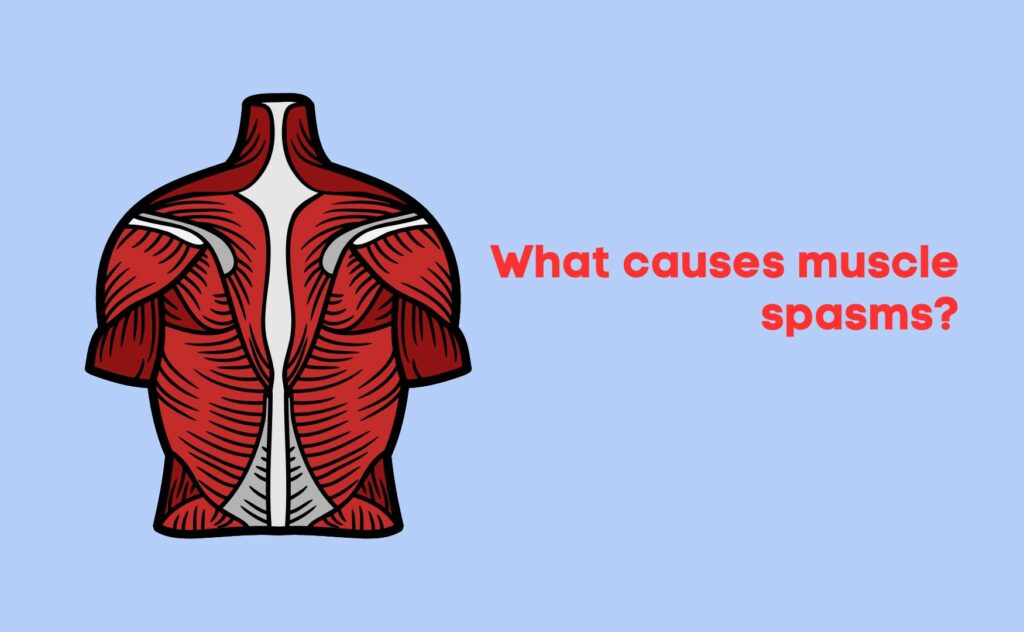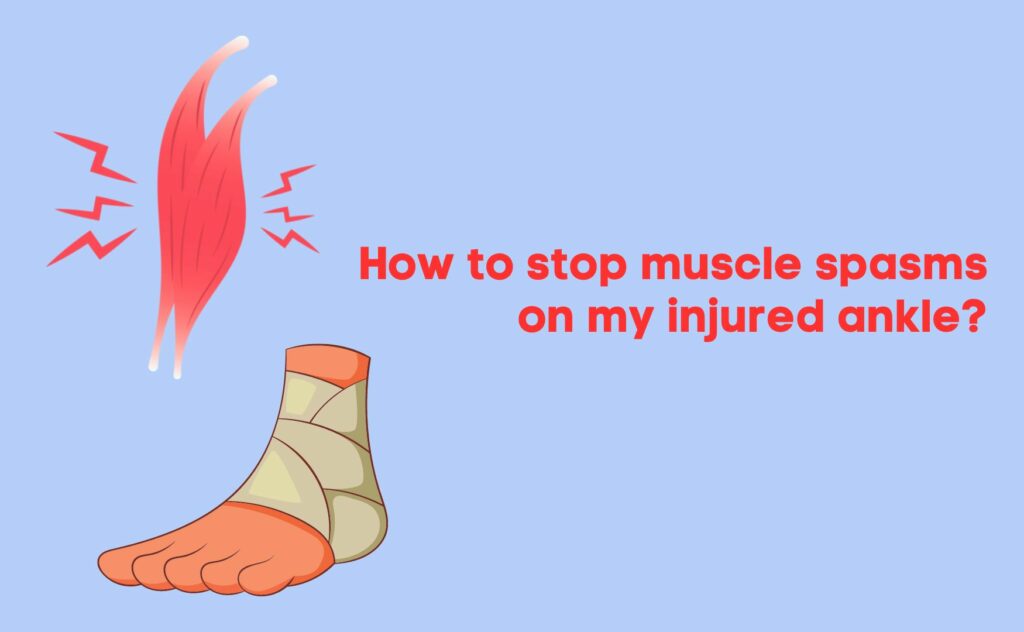
Muscle spasms after ankle surgery can be a frustrating and painful experience. These spasms can occur for a variety of reasons, including changes in nerve activity, inflammation, and muscle fatigue. If you are experiencing muscle spasms after ankle surgery, there are several steps you can take to help alleviate your symptoms and reduce the frequency and intensity of these spasms.
- First, it is important to rest and elevate your ankle as much as possible. This can help reduce inflammation and promote healing. Additionally, you may want to apply ice or a cold compress to the affected area to further reduce swelling and discomfort.
- Stretching and gentle exercise can also be helpful in reducing muscle spasms after ankle surgery. This can help improve circulation and promote healing while also reducing muscle tension and stiffness. Your doctor or physical therapist can provide you with specific exercises and stretches that are appropriate for your condition and stage of recovery.
- In some cases, medications may be necessary to help manage muscle spasms after ankle surgery. This can include over-the-counter pain relievers such as acetaminophen or ibuprofen, as well as prescription medications that target nerve activity or muscle tension. It is important to talk to your doctor about any medications you are taking, as some may have potential side effects or interactions with other medications.
If your muscle spasms after ankle surgery are particularly severe or frequent, your doctor may recommend other treatments such as massage, acupuncture, or electrical stimulation. These treatments can help relax muscles, reduce tension, and improve circulation, all of which can help alleviate symptoms and promote healing.
In conclusion, muscle spasms after ankle surgery can be a frustrating and painful experience, but there are several steps you can take to help alleviate your symptoms and promote healing. Rest, elevation, ice, stretching, and medication are all effective strategies for managing muscle spasms after ankle surgery. Additionally, working closely with your doctor or physical therapist to develop an individualized treatment plan can help you achieve the best possible outcomes and minimize the impact of muscle spasms on your recovery.
What causes muscle spasms?

Muscle spasms are a common condition that can affect people of all ages and fitness levels. They can occur for a variety of reasons, including dehydration, nutrient deficiencies, nerve damage, and certain medical conditions. In the case of muscle spasms after ankle surgery, there are several factors that may contribute to the development of this condition.
Muscle fatigue
One of the most common causes of muscle spasms is muscle fatigue. When muscles become tired or overworked, they are more prone to spasms and cramps. This is particularly true after surgery, as the body is working hard to heal and recover from the trauma of the procedure. Additionally, swelling and inflammation in the ankle and surrounding areas can put additional stress on the muscles, leading to spasms and cramping.
Dehydration
Dehydration can also contribute to the development of muscle spasms. When the body is dehydrated, electrolyte imbalances can occur, which can cause muscles to contract and spasm. This is particularly common during and after surgery, as patients may be restricted from drinking fluids for a period of time.
Medications
Certain medications and medical conditions can also contribute to the development of muscle spasms. For example, some medications used to treat high blood pressure and other cardiovascular conditions can cause muscle cramps and spasms as a side effect. Similarly, medical conditions such as diabetes and multiple sclerosis can affect nerve function and contribute to the development of muscle spasms.
In conclusion, muscle spasms after ankle surgery can be caused by a variety of factors, including muscle fatigue, dehydration, medications, and medical conditions. If you are experiencing muscle spasms after ankle surgery, it is important to work closely with your doctor or physical therapist to identify the underlying cause of your symptoms and develop an individualized treatment plan. By addressing the root cause of your muscle spasms and taking steps to manage your symptoms, you can promote healing and achieve the best possible outcomes.
How to stop muscle spasms on my injured ankle?

Muscle spasms can be a painful and frustrating symptom, especially when they occur after ankle surgery. Fortunately, there are several strategies that can help to alleviate muscle spasms and promote healing in the affected area.
- One effective way to stop muscle spasms on your injured ankle is to practice gentle stretching and range-of-motion exercises. These exercises can help to promote blood flow and flexibility in the affected muscles, reducing the likelihood of spasms and cramping. Your physical therapist can provide you with specific exercises and guidance on how to perform them safely and effectively.
- Another effective way to stop muscle spasms is to apply heat or cold therapy to the affected area. Heat therapy can help to relax muscles and improve circulation, while cold therapy can help to reduce inflammation and pain. Depending on the underlying cause of your muscle spasms, your doctor or physical therapist may recommend one or both of these therapies to help alleviate your symptoms.
In some cases, medications may be prescribed to help alleviate muscle spasms and associated pain. Muscle relaxants and anti-inflammatory medications may be used to help alleviate spasms and promote healing in the affected area. However, it is important to use these medications only as directed by your doctor, as they can have potential side effects and interactions with other medications.
Finally, lifestyle modifications such as staying hydrated, getting plenty of rest, and avoiding activities that may exacerbate your symptoms can also help to alleviate muscle spasms after ankle surgery. By taking a proactive approach to managing your symptoms and working closely with your healthcare team, you can minimize discomfort and promote healing in the affected area.
In conclusion, muscle spasms after ankle surgery can be a painful and frustrating symptom, but there are several strategies that can help to alleviate your symptoms and promote healing. By incorporating gentle stretching and range-of-motion exercises, applying heat or cold therapy, taking medications as directed, and making lifestyle modifications, you can minimize discomfort and promote healing in the affected area.
Conclusion
In conclusion, muscle spasms after ankle surgery can be a common and frustrating symptom, but there are several strategies that can help to alleviate your symptoms and promote healing. By understanding the underlying causes of muscle spasms, you can take a proactive approach to managing your symptoms and working closely with your healthcare team to minimize discomfort and promote healing in the affected area.
Whether you are recovering from a surgical procedure or simply experiencing muscle spasms due to an underlying condition or injury, it is important to seek prompt medical attention and work closely with your healthcare team to develop an effective treatment plan. By incorporating a variety of strategies such as gentle stretching, heat or cold therapy, medications, and lifestyle modifications, you can help to alleviate your symptoms and improve your overall quality of life.
While muscle spasms after ankle surgery can be a frustrating symptom to deal with, it is important to remember that with proper care and attention, they can be effectively managed and treated. By taking a proactive approach to your recovery and working closely with your healthcare team, you can minimize discomfort and promote healing in the affected area, allowing you to get back to the activities and lifestyle you love. So if you are experiencing muscle spasms after ankle surgery, don’t hesitate to reach out to your healthcare provider and explore your treatment options.